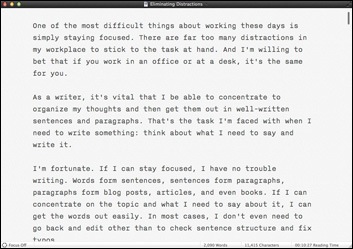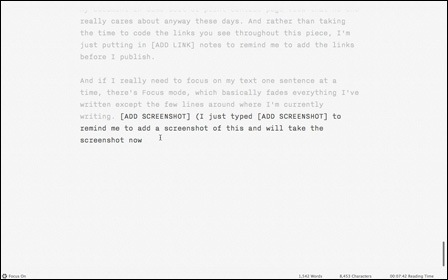It’s a royalty agreement, folks.
The other day, I received an unusual email on my Flying M Productions email account. Flying M Productions is my little publishing company, the one I use to publish Maria’s Guides and other books. Its website isn’t much to look at; just a lot of promotional material for the items it publishes and sells. There’s no support for any book there; all support for Maria’s Guides can be found on the Maria’s Guides website.
The Question
Here’s the message, in its entirety; I’ve only omitted the sender name:
I am looking for understanding of this financial requirement for ibooks author:
(Apple does not pay partners until they meet payment requirements and earning thresholds in each territory. You should consider this before applying to work directly with Apple as you may receive payments faster by working with an Apple-approved aggregator.)
Apple was not able to explain this and said I had to contact you.
Please explain.
This is obviously a lie — or a big misunderstanding — I seriously doubt whether Apple even knows of the existence of Flying M Productions — especially since I’ve been waiting over a month for it to approve two titles for the iBookstore. The idea that Apple would refer someone to me about one of their policies is truly laughable. The idea that a tiny publisher with just four titles in 20 years would provide support for the most valuable company in the world is a real joke.
And that explains why I didn’t reply.
What’s This About?
But I wanted to know what she was talking about so I did a little search. I wanted to see whether the text she’d included in parentheses was actually present in any Apple agreement. I picked “payment requirements” and “Apple-approved aggregator” as my search phrases.
First I searched the most recent version of the 37-page Ebook Agency/Commissionaire Distribution Agreement that I’m required to sign to create books for sale on the iBookstore. No joy.
Then I searched the license agreement for the current version of iBooks Author. No joy.
Then I went online, and followed a bunch of links on the Apple and iTunesConnect websites. I eventually wound up on the requirements page for the Paid Books Account. And there, in the third bullet under the heading “Financial Requirements,” was the full text she’d put in parentheses in her email message.
Apple’s Stand on This
Before I go on, you need to understand two things:
- Apple does not want everyone capable of typing a sentence and turning it into an epub or iBooks Author document to publish on the iBookstore. Think I’m kidding? Why else would they require ISBNs for every title sold on the iBookstore? That’s just another hurdle for authors/publishers to jump. Why does Apple take this stand? Because Apple (1) doesn’t want to publish crap and (2) doesn’t want to hold the hands of hundreds or thousands of author/publisher wannabes to walk them through the publication process.
- “Apple-approved aggregators” exist primarily as a support mechanism for Apple. If an author/publisher is too clueless to publish on the iBookstore, Apple wants a way to graciously hand them off to someone else. Thus, they approve aggregators who apparently don’t mind holding hands with clueless authors/publishers in exchange for a fee.
The Requirements page linked to above is another hurdle for authors/publisher to jump. It lists requirements to further weed out the folks they don’t want to deal with. Hell, you have to have a relatively new Mac to publish on the iBookstore — if that doesn’t weed out a bunch of people, nothing will.
What are the Payment Requirements?
But what the person who contacted Flying M Productions was concerned with was the “payment requirements.” Of all the requirements, this is the least onerous. All this means is that Apple won’t pay royalties until you’ve reached certain minimum sales amounts. Why? Well, Apple doesn’t want to deal with thousands of tiny payments every month. Instead, it holds your royalties on account until you’ve earned enough for them to make it worthwhile to pay.
This, by the way, is common. Google has always done this with Adsense. Amazon.com does it for the Kindle Direct Publishing program.
While this may seem to suggest that you need to reach a threshold for each individual territory to get payment for that territory, that’s not what I’m seeing. In fact, I was just paid today for February’s sales. My royalty earnings on sales in each of six territories ranged from a low of $38.73 to a high of $659.40, and I was paid for the total amount earned.
Paragraph 5(c) of the Ebook Agency/Commissionaire Distribution Agreement states (in part):
After deducting Apple’s commission from eBook Proceeds, Apple shall either remit to Publisher, or issue a credit in Publisher’s favor, subject to Apple’s standard business practices, including minimum monthly remittance amount thresholds determined by Apple (e.g., $150), the remaining balance by electronic funds transfer (“EFT”) no later than forty-five (45) days following the close of the previous monthly sales period.
This tells me that you need to earn a certain amount of royalties before Apple will pay you and they’re required to pay within 45 days of the close of the period. That’s why I didn’t get my February earnings until April 5 — which is still a hell of a lot better than I get from my traditional print publisher contracts.
The $150 is an example. In looking at my past statements, for periods when I only had one title listed in the iBookstore, I was paid $28 one month and $31 another. Clearly Apple is not waiting for me to earn $150 before it pays me.
How Apple-Approved Aggregators Fit In
In re-reading this Requirements page, I’m thinking that Apple is using this scary sounding “requirement” as a way to encourage authors/publishers to use aggregators. But will aggregators pay more quickly? I can’t see how. Unless Apple uses different thresholds for different publishers? Or aggregators are willing to make payments for very small amounts? Or aggregators are willing to pay before the 45-day period has gone by?
Either way, it’s nothing to get all hot and bothered about.
But I do agree with Apple: if you can’t meet their requirements, use an aggregator.


